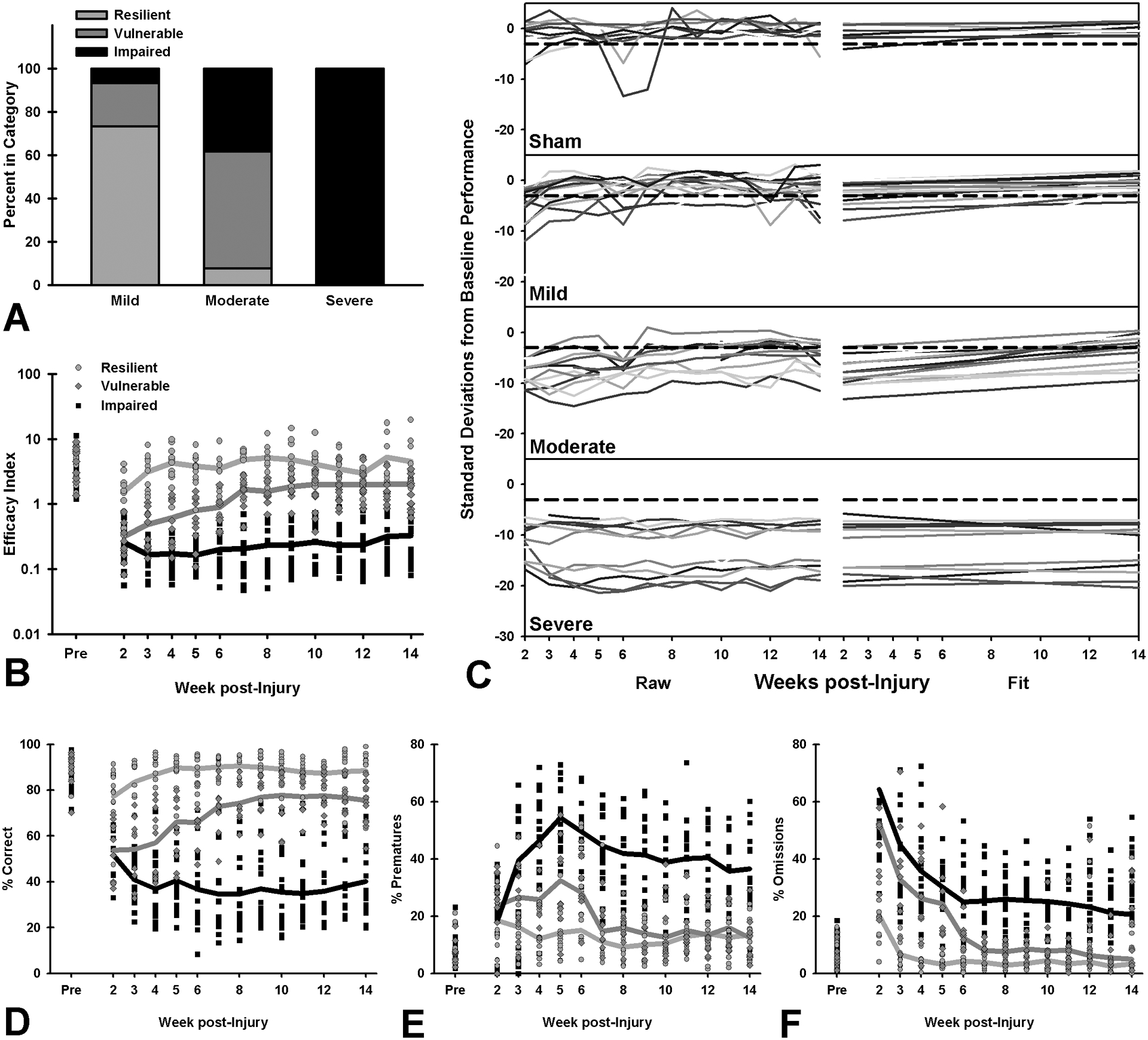Figure 3.

Individual differences in 5CSRT performance and response to brain injury at acute (week 2–5) and chronic (week 5–14) time points. Although sham data is shown for reference in panel C, only injured rats were included in analyses. A) Independent of injury conditions, rats were categorized as “resilient” if they recovered within 5 weeks, “vulnerable” if they recovered by the end of testing (14 weeks), or “chronically impaired” if they never recovered. B) Resilient rats showed acute reductions in task efficacy (p = 0.032) which resolved over time (p = 0.940), while vulnerable rats had continuing deficits despite their recovery (p < 0.001), and chronically impaired rats had unrecovered deficits (p < 0.001). C) The left side of the panel shows raw data for each subject in terms of standard deviations from baseline performance (overall task efficacy), while the right side shows regression fits. Recovery was defined as within 3 standard deviations of (individual) baseline performance (dashed lines). Rats in each injury group show a highly variable response to brain injury. D) Resilient rats demonstrated acute deficits in attention (p = 0.045), which quickly recovered to baseline levels (p = 0.770), while neither vulnerable nor chronically impaired rats fully recovered (p < 0.001; p < 0.001). E) Resilient rats had no change in impulsivity across testing (p = 0.145; p = 0.529), but both vulnerable and chronically impaired rats showed increased impulsivity in the acute period (p < 0.001; p < 0.001), which extended to chronic testing (p = 0.012; p < 0.001). F) Resilient rats showed no change in omitted trials during acute or chronic phases (p = 0.565; p = 0.186), while vulnerable rats showed deficits in the acute (p < 0.001), but not chronic time points (p = 0.445), and chronically impaired rats demonstrated increases throughout testing (p < 0.001). Data shown are individual subjects’ data points and group means.
